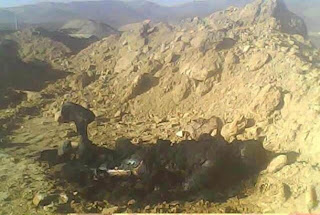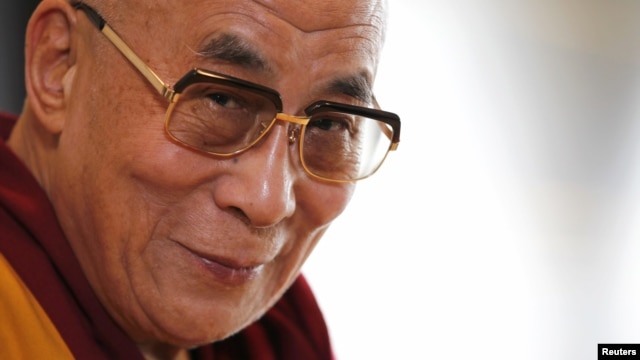With the continuing escalation in protests against Chinese
rule in Tibet, school students in the exile seat of Dharamshala carried
out a peace march followed by a prayer session in solidarity with
Tibetan self-immolators, Saturday.
Senior students of the Upper Tibetan Children’s Village School carried out a peace march from the school basketball court to the Martyr’s Pillar near Tsug-la Khang, the main temple.
The school’s student council, which took the initiative to organise the march and prayer service, said the entire students, through the campaign, express solidarity with Tibetans inside Tibet and send a clear message to the United Nations and the international community that they need to take “urgent and effective actions to end the crisis inside Tibet.”
To accentuate their appeal, the marching students wore cross marks on their eyes, ears, mouth and hands.
Thupten Dorjee, the school captain told Phayul that the cross marks symbolise the urgent need on the part of the UN and the international community to “monitor the unfolding crisis inside Tibet, listen to the six million Tibetans, speak up for the demands of the Tibetan self-immolators, and take effective action and send a special delegation to asses Tibet’s situation.”
“Although, we are in the middle of our preparations for our final exams, but despite that the students felt it necessary to organise the campaign to express our concern and solidarity with the tragic happenings inside Tibet,” Dorjee said. “We do clearly understand that our first responsibility as of now is to study hard for the cause of Tibet.”
Senior students of the Upper Tibetan Children’s Village School carried out a peace march from the school basketball court to the Martyr’s Pillar near Tsug-la Khang, the main temple.
The school’s student council, which took the initiative to organise the march and prayer service, said the entire students, through the campaign, express solidarity with Tibetans inside Tibet and send a clear message to the United Nations and the international community that they need to take “urgent and effective actions to end the crisis inside Tibet.”
To accentuate their appeal, the marching students wore cross marks on their eyes, ears, mouth and hands.
Thupten Dorjee, the school captain told Phayul that the cross marks symbolise the urgent need on the part of the UN and the international community to “monitor the unfolding crisis inside Tibet, listen to the six million Tibetans, speak up for the demands of the Tibetan self-immolators, and take effective action and send a special delegation to asses Tibet’s situation.”
“Although, we are in the middle of our preparations for our final exams, but despite that the students felt it necessary to organise the campaign to express our concern and solidarity with the tragic happenings inside Tibet,” Dorjee said. “We do clearly understand that our first responsibility as of now is to study hard for the cause of Tibet.”
The students
then took out a candle light vigil back to the school. A short video
depicting the ongoing wave of self-immolations inside Tibet was screened
to the students following which a prayer service was held in the
evening.
The deepening crisis inside Tibet has witnessed large scale anti-China protests and a series of self-immolations that has now seen 81 Tibetans set themselves on fire, since 2009, demanding freedom and the return of the Dalai Lama from exile.
November alone has reported 19 self-immolations and protests by thousands of Tibetans, including by school students in the Rebkong region of eastern Tibet.
The deepening crisis inside Tibet has witnessed large scale anti-China protests and a series of self-immolations that has now seen 81 Tibetans set themselves on fire, since 2009, demanding freedom and the return of the Dalai Lama from exile.
November alone has reported 19 self-immolations and protests by thousands of Tibetans, including by school students in the Rebkong region of eastern Tibet.








 Dharamshala:
- Non-violence and the preservation of Tibet's culture and environment
topped the bill during a speech by the spiritual leader of Tibet, His
Holiness the Dalai Lama to a group of international Tibet supporters on
Saturday, November 17.
Dharamshala:
- Non-violence and the preservation of Tibet's culture and environment
topped the bill during a speech by the spiritual leader of Tibet, His
Holiness the Dalai Lama to a group of international Tibet supporters on
Saturday, November 17.









